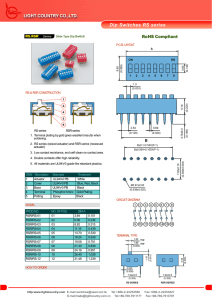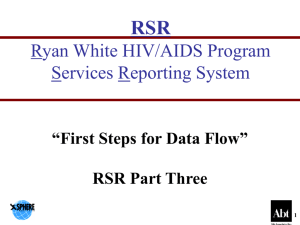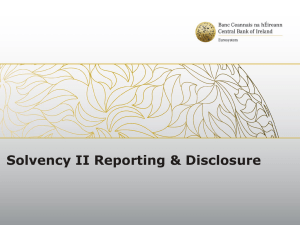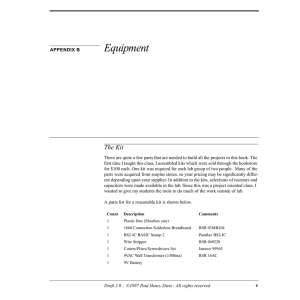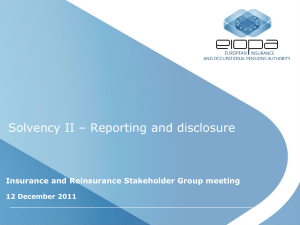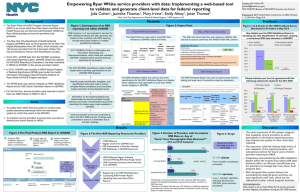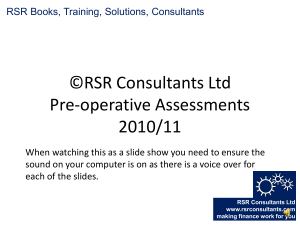Reporting and Disclosure - Tim O`Hanrahan
advertisement
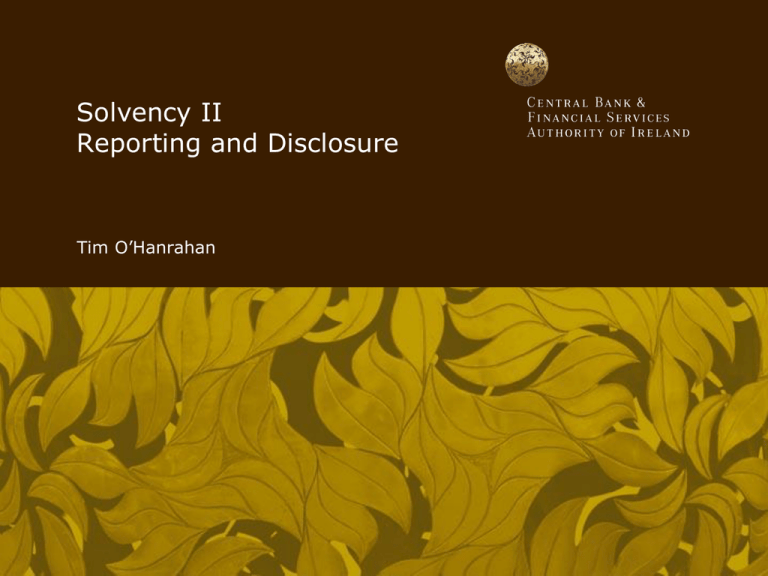
Solvency II Reporting and Disclosure Tim O’Hanrahan Overview • • • • What reports will be required? What is in those reports? Are the reports Public or Private? Process – – – – Frequency Submission Dates Format Sign-off/Audited • Groups • Proportionality • Open Questions 2 Important Note • The presentation is based on a combination of the Directive, Draft Level 2 Implementing Measures and current early drafts of Level 3 Guidance. • The resulting requirements will evolve and develop over time and all undertakings should keep up to date with developments. 3 What reports will be required? Art. 35 Supervisory reporting Solvency and Financial Condition Report (SFCR) - Publicly disclosed data -Narrative Report -Quantitative reporting templates Regular Supervisory Report (RSR) -All information necessary for the purposes of supervision -Narrative Report -Quantitative reporting templates 4 5 What is in those reports? i) SFCR and ii) RSR Contents of SFCR and RSR A) Business, B) Governance External and Environment and Remuneration Performance Policy C) Risk Profile 1. Business and external environment 2. Underwriting Performance 3. Investment Performance 4. Performance from other activities Following risks 1. Underwriting Risk 2. Market 3. Credit 4. Liquidity 5. Operational 6. Other material Risk Exposures 7. Any other disclosures 6 1. Governance Arrangements 2. Fit and Proper 3. Risk Management & ORSA 4. Internal Control 5. Internal Audit 6. Actuarial 7. Outsourcing 8. Any other disclosures Contents of SFCR and RSR D) Valuation for Solvency Purposes E) Capital Management 1. 2. 3. 4. 1. Own Funds - structure, amount & quality 2. MCR and SCR 3. SCR differences if standard formula or internal model used 4. Non-compliance with SCR/MCR 5. Other Disclosures 7 Assets Technical Provisions Other Liabilities Other Disclosures What do you disclose for Underwriting Performance? SFCR (Public) RSR (Private) 1. The undertaking’s underwriting performance by material line of business and geographical area; 2. The undertaking’s underwriting expenses by material line of business and geographical area over the year and compared to the prior year. 1. A discussion and analysis by the administrative, management or supervisory body of the undertaking’s overall underwriting performance; 2. Details of the undertaking's underwriting performance by line of business against plan, and significant factors affecting deviations from plan; 3. Projections of the undertaking's underwriting performance over the business planning period with details of significant factors that might affect underwriting performance; 4. Details of any reinsurance, ART and finite reinsurance programmes purchased, including those currently not being claimed on. 8 Contents of SFCR and RSR And also... Quantitative forms 1. Current draft, 59 different forms!!! 2. Including forms on: • Profit and Loss Account • Balance Sheet • Off Balance Sheet • Solvency Capital Requirement • List of each investment held • List of each derivative • Technical Provisions • Risk Profile • Loss Profile 3. All forms will be reported annually, a subset will be reported every quarter. 9 Example List of Investments Each investment held with details such as: 1. Identification a) ID Code b) Security Type c) Issuer Name, Sector, Country 2. Price & Quantity a) Price b) Valuation Method c) Cost 3. Risk Section a) External Rating b) Rating Agency c) Underlying of Securitisation d) Duration Reporting required on other occasions? • Predefined events – Predefined events are those that can lead to material changes to an undertaking’s risk profile – May require supervisory authorities to reassess the frequency and intensity of supervisory actions. • Supervisory Enquiries – Supervisors may request any information required to assess the situation of an undertaking 11 Are the reports Public or Private? Public Private for Supervisors SFCR Yes RSR No Yes Predefined Events Yes for items such as non-compliance with MCR or significant noncompliance with SCR and no satisfactory action taken in required timeline Yes Supervisory Enquiry Generally no but may give rise in certain circumstances to a public disclosure Yes 12 Process of Reporting Frequency of Reporting External auditing requirements Process of Reporting Format of Reporting 13 Submission dates Process of Reporting – Frequency and Submission Dates SFCR RSR Quantitative Forms Frequency Annual 1) Full report at least every 3 years or when required by Supervisors 2) Material Updates Annually Quarterly and Annual Submission Date 14* weeks after year end 14* weeks after year end Quarterly 6* weeks after end. Annual 16* weeks after year end * There is a limited extension until 2015 14 Process of Reporting –Submission Dates Due dates Year end 31/3/13 Year end 31/12/13 SFCR – Annual Narrative & Quantitative Mid July 2013 April 2014 RSR Narrative & Quantitative Mid July 2013 April 2014 Quarterly Quantitative Mid August 2013 for Q1 ended 30/6/13 Mid May 2013 for Q1 ended 31/3/13 15 Process of Reporting – Frequency and Submission Dates SFCR RSR Quantitative Forms Format Common Template as developed by CEIOPS Common Template as developed by CEIOPS Common Template as developed by CEIOPS Sign off internal – administrative or management body Yes Yes Yes Sign off – external auditing or verification No No Yes to be developed 16 Group reporting Group Subsidiary 17 Solvency and Financial Condition Report Report to Supervisors Quantitative Forms Yes Yes Yes Same as Single entity + additional requirements Same as Solo + additional requirements Same as Solo + additional requirements Could include in Yes Group report (subject to agreement) i.e. Subsidiary would not have to complete Yes Proportionality How is Proportionality Demonstrated Regular Supervisory Reporting (RSR) Frequency of RSR is not required annually Qualitative forms Qualitative reporting and disclosure requirements are principled based Quantitative Forms You do not have to complete forms that are Not applicable 18 Open Questions • Audit requirements : scope ? level of assurance ? • Public disclosure of some templates : which ones ? • National specificities : content ? role of EIOPA ? Can local GAAP be used for Solvency II ? • Proportionality : less requirements for small or less complex undertakings ? impact on comparability & aggregation of data ? “automaticity” of proportionality ? 19 Overview • • • • What reports will be required What is in those reports Are the reports Public or Private Process – – – – Frequency Submission Dates Format Sign-off/Audited • Groups • Proportionality • Open Questions 20 Thank you
